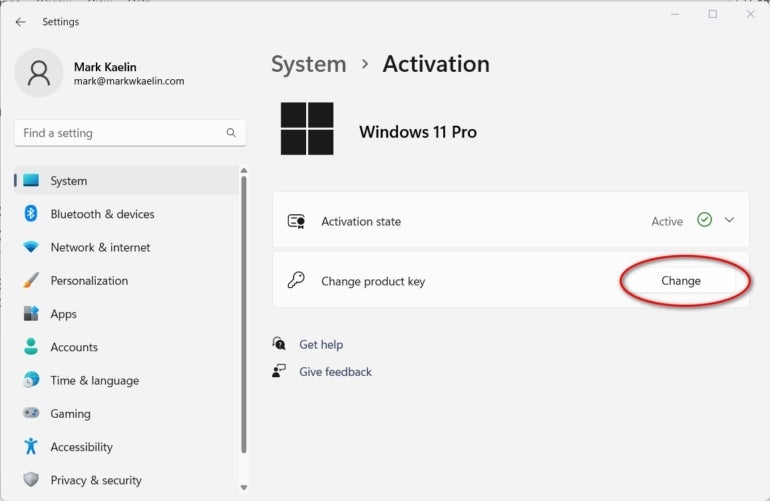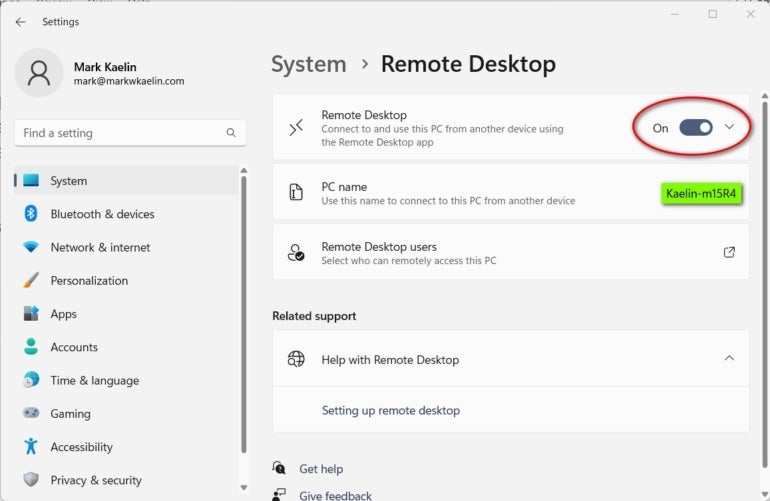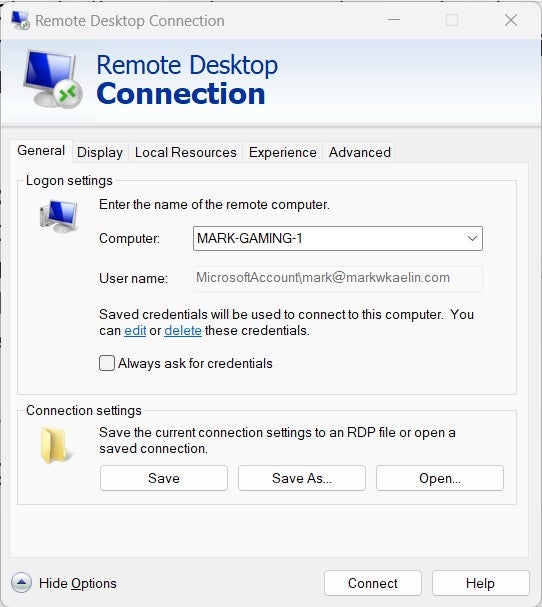How to activate Remote Desktop Connection in Windows 11 Pro
Activating and establishing a stable remote network connection between Windows 11 computers requires preparation and a specific version of the operating system.
If you work from home or on the road, it can be extremely convenient to create a stable remote network connection between various PCs using software and protocols built into Windows 11. By combining the Remote Desktop Connection application with a VPN connection, you can gain direct access to internal IT supported systems. From a productivity standpoint, you are essentially working in the office without physically being in the office.
SEE: Google Workspace vs. Microsoft 365: A side-by-side analysis (TechRepublic Premium)
However, activating and establishing that stable remote network connection requires preparation and a specific version of Windows 11. The Remote Desktop Connection remains similar to the version found in Windows 10, but there are minor differences you should be aware of during the activation procedure. Also, you may need support from your IT department to complete the connection process.
Windows 11 Pro: Activate the Remote Desktop Connection application
The Remote Desktop Connection application is only available to users of Windows 11 Pro or Windows 11 Enterprise, as users of Windows 11 or 10 Home are specifically excluded from this feature by Microsoft.
In order to enable remote connections, users will have to upgrade to the Pro or Enterprise version of the Windows operating system. This is inconvenient, but it may well be worth any extra cost.
To upgrade Windows 11 Home to Windows 11 Pro, open Settings and navigate to System | About | Product Key and activation to reach the screen shown in Figure A.
Figure A

Windows Home users can purchase and enter a new product key that upgrades their OS to a Pro version. If you have an old Pro product key from a previous version of Windows Pro (10, 8 or 7), Microsoft may allow you to perform the upgrade at no additional cost.
With Windows 11 Pro in place, you may now activate the remote connection protocols. Open Settings again and scroll down the list of items to find Remote Desktop and click it to open the details page (Figure B).
Figure B

Flip the toggle switch to the On position and confirm your request. Note the name of the computer. To use the Remote Desktop Connection application, you will need to know the exact name of each computer before you can remotely connect to it. For computers managed by your IT department, you may also have to ask for a specific path as well as the name to establish your remote connection. For your home network, just the name should suffice.
When you want to make a remote connection to this computer, start the Remote Desktop Connection app on a secondary PC (Figure C). The easiest way to do this is by typing “remote” into the desktop search and choosing the appropriate item in the results.
Figure C

You will likely have to enter proper credentials and provide the appropriate computer name the first time you try to establish a remote connection. After that, assuming everything goes to plan and you choose the right configuration, all you will have to do is click the Connect button.
TechRepublic published a tutorial explaining all the potential options of the Remote Desktop Connection application if you would like to explore the details of this useful Windows 11 Pro feature.
Working without being at the office
In an era where in-office attendance has been deemphasized for so many industries and businesses, the ability to use a stable and reliable remote connection is of paramount importance.
Upgrading to Windows 11 Pro, while inconvenient and a little frustrating, may be worth the additional cost. If you want to save money and continue using Windows 11 Home, you may want to consider the benefits of the Chrome Remote Desktop application.
For all the latest Technology News Click Here
For the latest news and updates, follow us on Google News.
